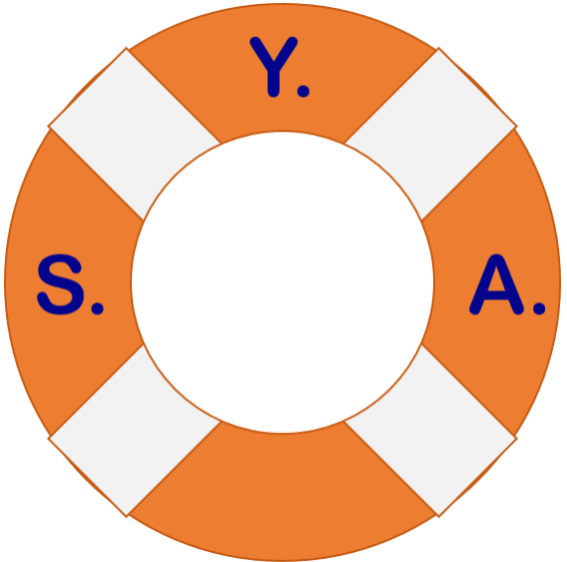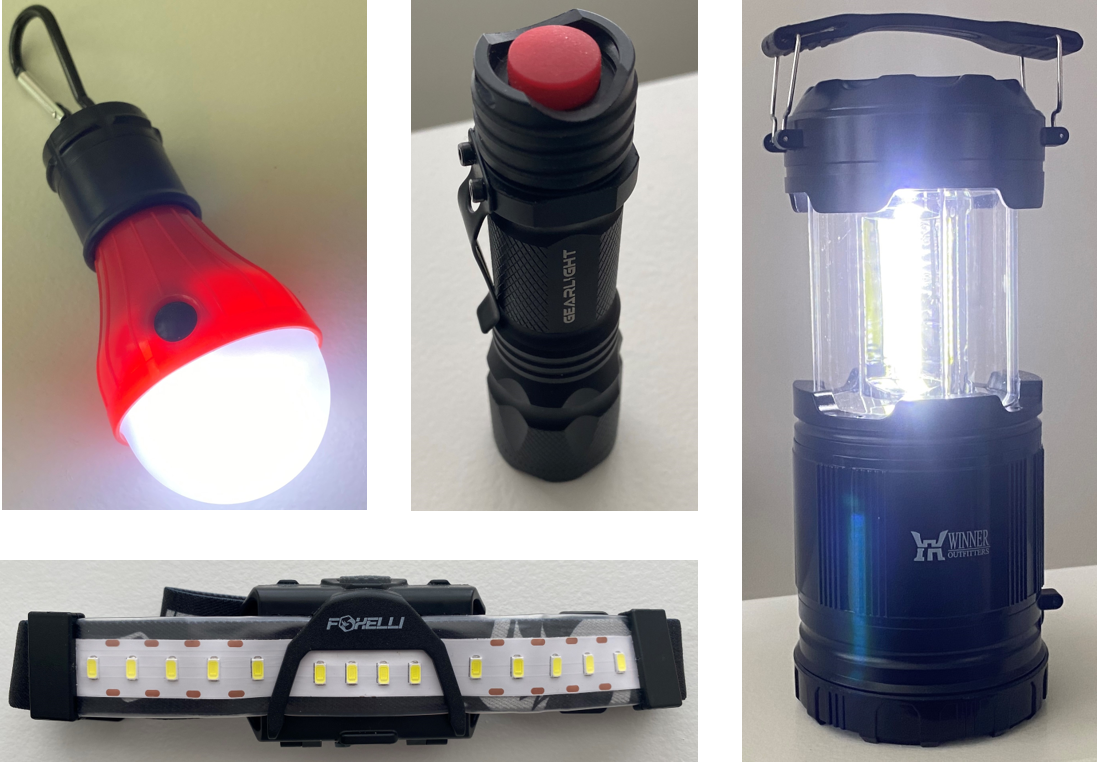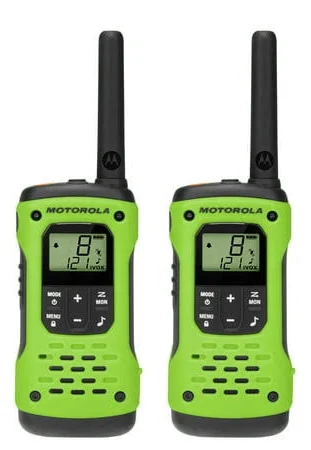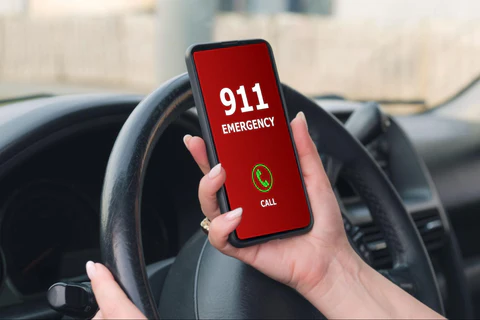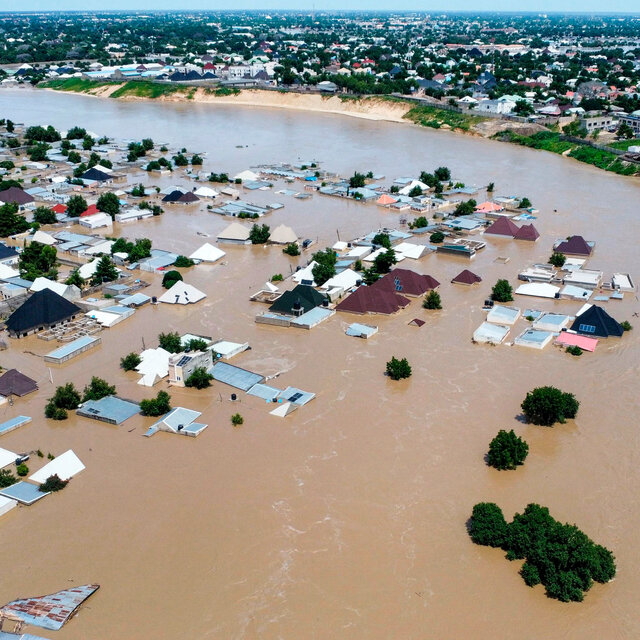This month I want to take a look at portable lighting. It is something that everyone should have regardless if you are preparing for a disaster or not. At some point you are going to need a flashlight for something. (Just ask the people of Texas after the devastating winter storm that caused wide-spread power outages and burst water pipes last week.)
There are so many different types of portable lighting available and it’s never been more affordable to get good lighting options for very little cost. I’m going to focus on a few types as they relate to the outdoors and emergency preparedness:
- Flashlights
- Lanterns
- Headlamps
- Emergency Lighting

Time to get rid of legacy devices
Legacy devices are those that use incandescent and halogen bulbs. Everything being manufactured now has switched to the brighter, cooler temperature and more power efficient LED lighting. While it is still possible to find and purchase incandescent or halogen bulbs as replacements for devices you already own, supplies are dwindling and costs are increasing. It doesn’t make any financial sense to continue using these legacy devices with LED bulbs and devices being so much cheaper and energy efficient. LED lighting is truly changing the lighting landscape in everything: flashlights, street lights, holiday lights, home lighting, outdoor gear, cars, trucks and more.
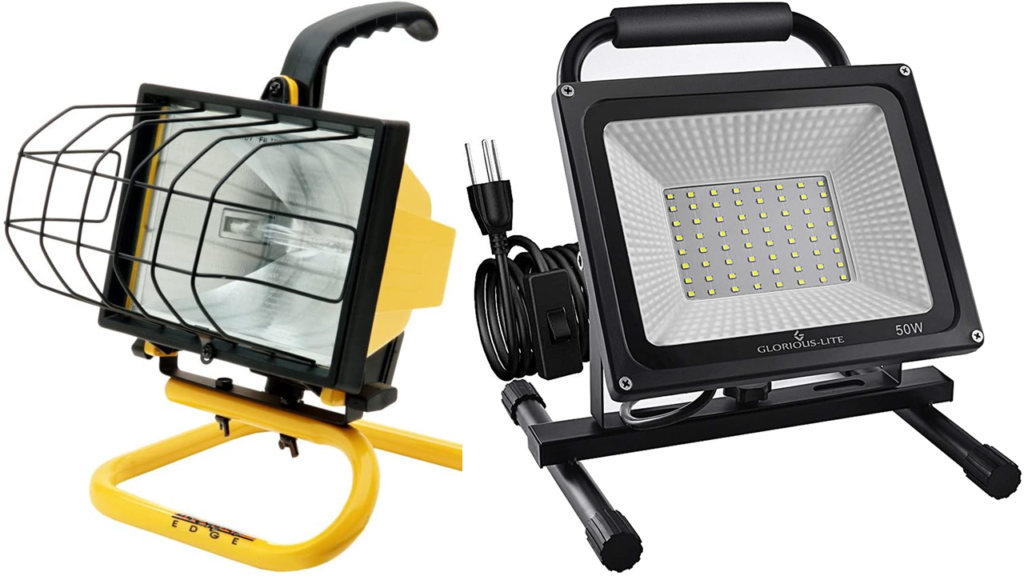
Alkaline Batteries
Regular alkaline batteries are heavy, don’t last very long and need to be replaced quite regularly. If you don’t use a device often and the batteries sit, they can eventually leak and damage or destroy the contacts in the device making it useless even with new batteries. Back in the 80s and 90s, lots of devices used the gigantic D and C type batteries or even worse a 6 volt battery which was not only bulky but weighed close to 2 pounds each. I would go through two of those batteries during a weeklong summer camp each year. You would be hard pressed to find anything today that uses those.
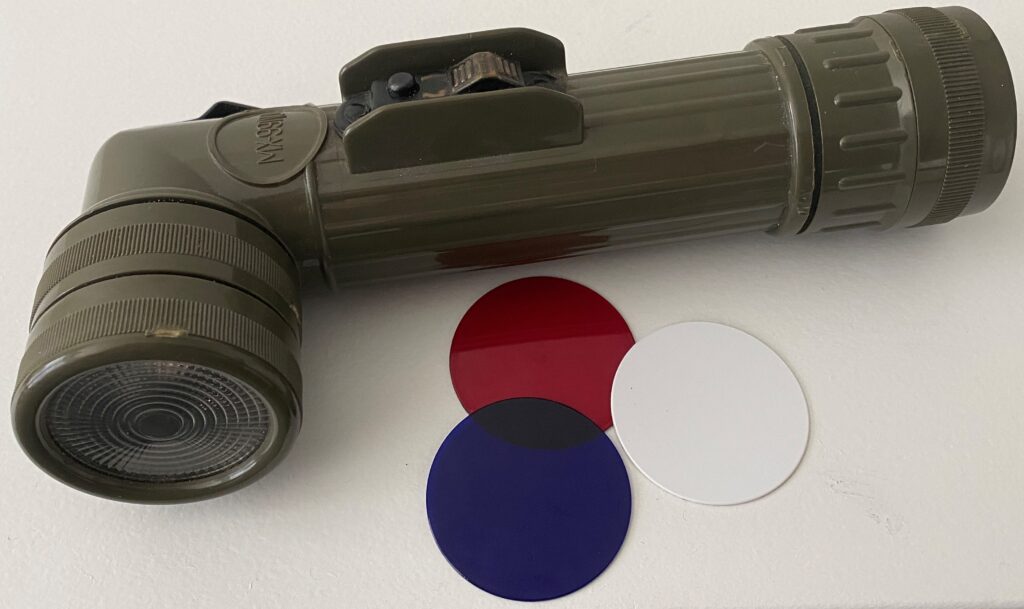
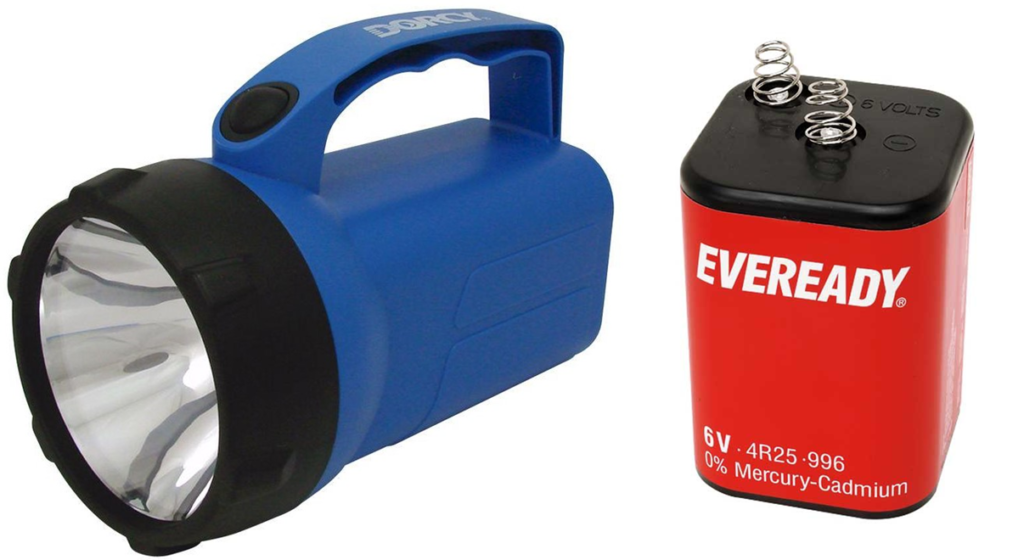
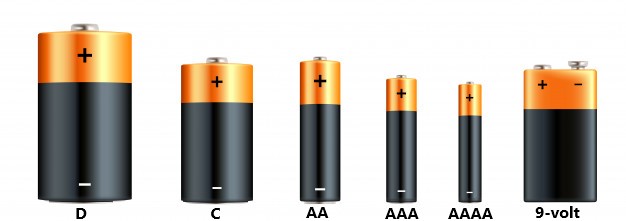
Most devices today that require regular batteries use AA, AAA and the even smaller and lighter AAAA batteries or button batteries if they are not rechargeable. I remember when I was in my late teens and getting into backpacking and trying to cut every ounce of weight from my pack. At the time, most flashlights used C or D batteries.
The shift to smaller, lighter batteries
Then a company called Maglite released a mini version of their popular flashlight that used AA batteries. I was so excited to find this powerful, durable, lightweight flashlight with an adjustable beam that used only 2 AA batteries instead of C or D batteries. Carrying 4 extra AA batteries in my pack didn’t take up a lot of space or add much weight (less than 1 D battery) compared to those other battery sizes. It also came with red, blue and orange colored lenses for different situations like my military flashlight.

LED Bulbs and Smaller, Lighter Batteries
Newer flashlights are even smaller, lighter and brighter using only a single AA or 2-3 AAA batteries which last much longer due to the LED lights using less electricity compared to an incandescent bulb. They are also more likely to have a variety of features not found on typical flashlights a few decades ago including:
- Adjustable Beam
- Multiple brightness settings
- Emergency strobe or SOS Flash
Flashlights
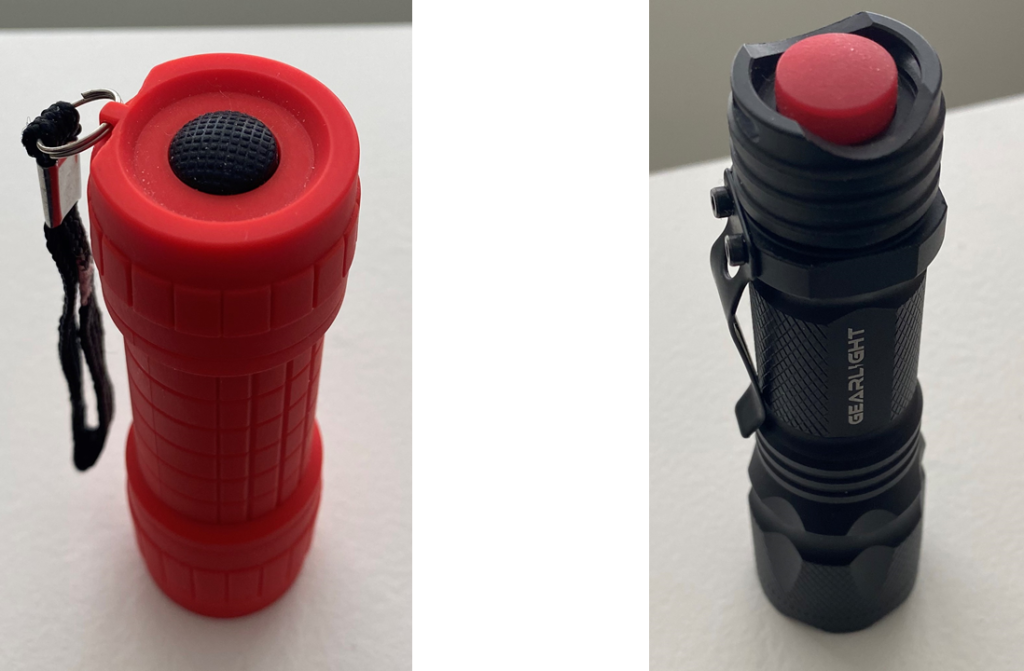
Black flashlight on right is aluminum with 2 brightness settings, flashing mode and adjustable beam that uses 1-AA battery. A 2-pack costs $15 on Amazon.
Headlamp
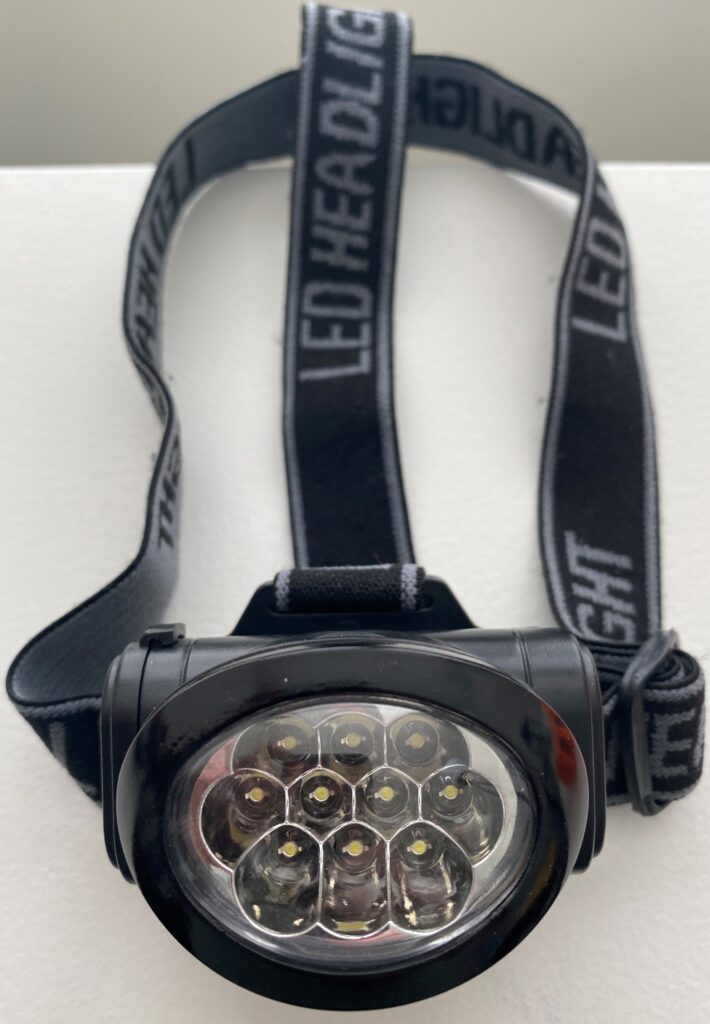
Lantern

Hanging Bulb
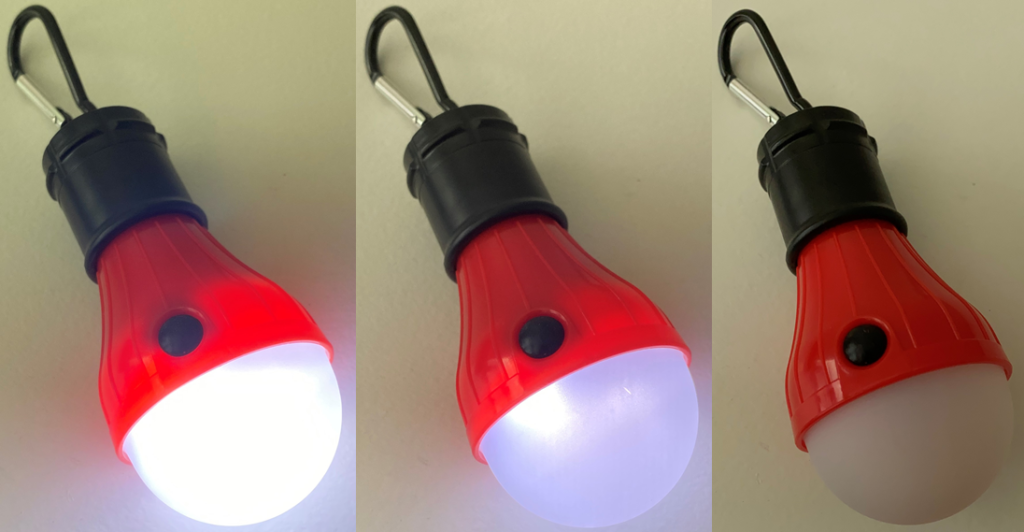
Emergency Roadside Flares
LED lighting is moving into the emergency space for cars as a replacement to the old-school flare. Here I have a 2 pack of LED road flares with reflective tape, magnetic base for attaching to metal surfaces or a stand you put on the road. It has red solid or flashing modes as well as a flashlight and each takes 3-AAA batteries. A 4-pack (for 2 cars) is available on Amazon for $30.
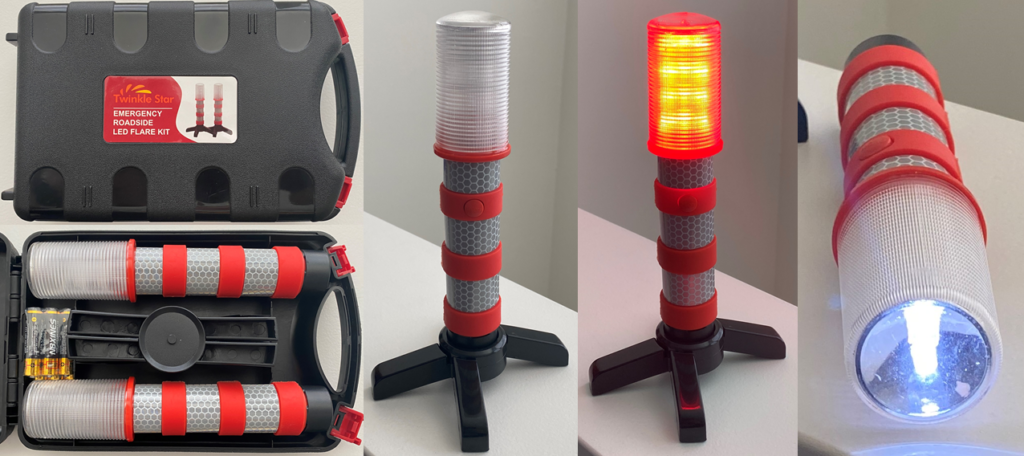
Rechargeable batteries
Until recently, portable lighting was dependent on those heavy and bulky alkaline batteries or needed to be plugged in (think portable construction lamps). The more recent trend that I really like is that these devices are increasingly coming with rechargeable batteries which I prefer and I am replacing regular battery devices with rechargeable ones in my equipment supply. You can thank the laptop and smart phone revolution for this trend. Not only have they pioneered lighter, longer-lasting and more energy efficient batteries for pcs and phones, the technology can be used in anything requiring batteries and we’re starting to see this in a variety of flashlight devices as well.
Headlamp
I have added a lightweight, waterproof headlamp to my gear. It lasts up to 13 hours on a single charge and I can charge it overnight or during the day using my power bank.

Emergency Flashers
While intended for car or boat emergencies, the compact and lightweight nature of these devices has compelled me to include one in my pack for emergencies. After seeing all the stories of rescuers having a hard time finding victims lost in the forest or mountains at night, I realized that a bright light like this could be the difference from being found quickly or not if I ran into trouble at night.
It claims it can hold a charge in standby mode for up to 1 year although I charge it quarterly if I haven’t used it. A 3-pack with carrying case and charge cable costs $30 on Amazon but is only $24 right now. There are lots of versions of this device available in 4, 6 or 12 packs but those require 3-AAA batteries each. I like not having to change batteries or worry about them leaking acid and damaging the device while not being used. These rechargeable ones are the only way to go in my opinion.

Battery packs
In fact, devices with rechargeable batteries have become so common that if you were to search for camping batteries on Amazon, the only results would be portable battery generators. Battery packs have become common in the last 10 years for recharging or powering everything from cell phones, laptops, tablets, and camping lights to small appliances in your RV.
The portable power bank I use is a 26800mAh battery that is solar rechargeable, has a Qi wireless charger for my iPhone, can charge up to 3 other devices simultaneously via the 2 USB A and 1 USB C ports and can be used as a flashlight. It is also water resistant, weighs just over 1 lb. It costs $39 on Amazon. There are numerous versions of these available in a variety of capacities from different manufactuers. Find one that works for you.
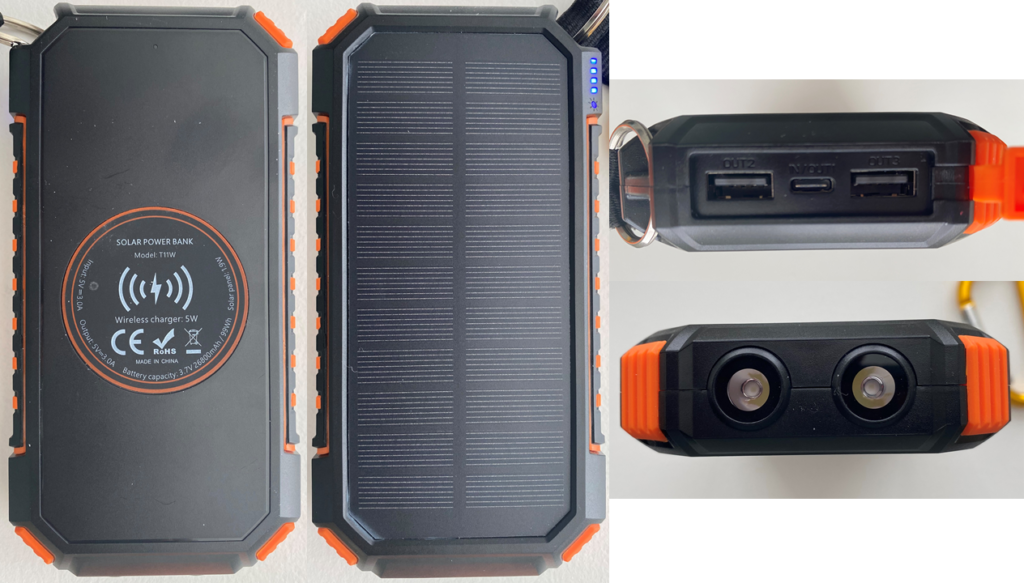
Emergency Radio/Flashlight Combos
Just like the solar battery pack mentioned above, emergency devices today tend to have extra features to make them more capable with options that can include:
- AM / FM Radio (analog and digital tuners)
- NOAA Weather Radio
- Solar Recharging
- Crank Recharging
- Cell phone charging port (USB cable may or may not be included)
- Emergency Flashing
- Emergency Siren
This DuraPro is an early example of an emergency flashlight/radio that is crank rechargeable. I got a 2 pack of these from Costco for less than $20 10 years ago, but one already gave up the ghost and the remaining one doesn’t hold a charge very long anymore. I plan on replacing them with the Eton Scorpion II.
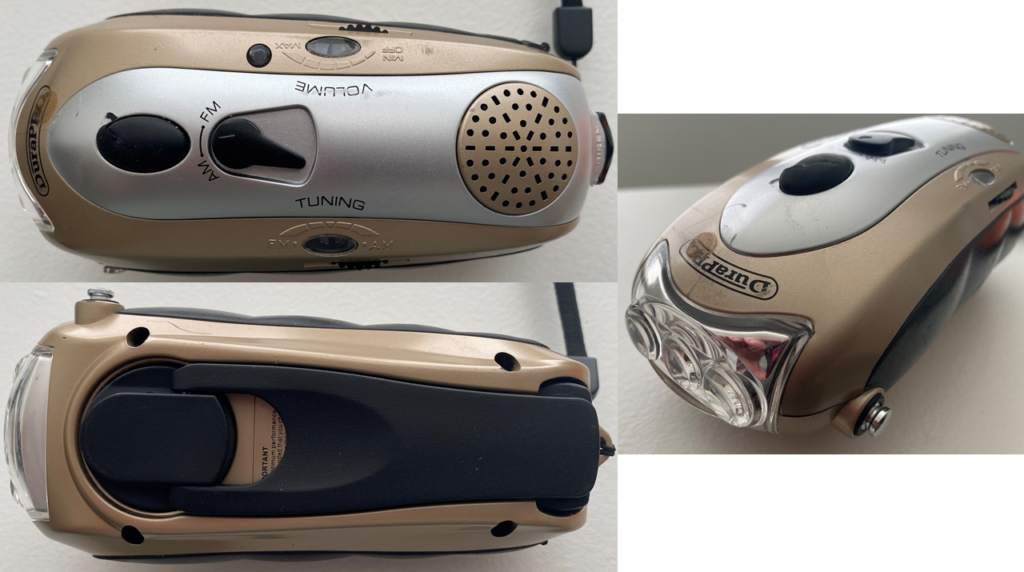
Eton Corp devices
Eton Corp, in fact, makes a variety of emergency flashlight/radio combos. The Scorpion II is on my wish list to replace the DuraPro (above). It’s rugged, IPX4 rated water resistant, has both AM/FM and NOAA weather radios using a digital tuner, a flashlight, is crank and solar rechargeable and has a USB port for charging a portable device like your cell phone, plus a handy built in carbineer style clip to attach to a backpack or hang up. It’s available on Amazon for $35.
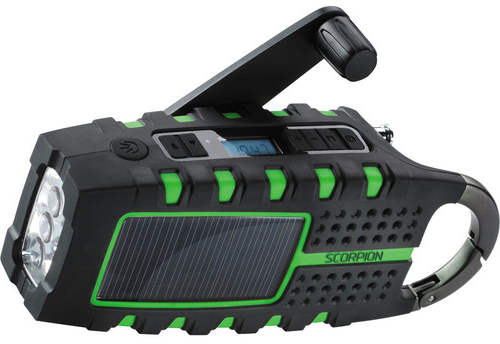
The Scorpion II will also replace my Eton manufactured, American Red Cross branded emergency flashlight/radio/weather radio that I have had for over 15 years now. This one is also a solar and crank rechargeable device. It too has AM/FM an NOAA weather radios but uses an analog tuner which can be more difficult to get clear signal on. The flashlight is good but the early 2000s cell phone charger is no longer usable since it is not USB. You can find newer versions of this flashlight (regular or ARC branded) on Amazon for as low as $17. Slightly larger ones range between $30-60 from a large number of manufacturers.
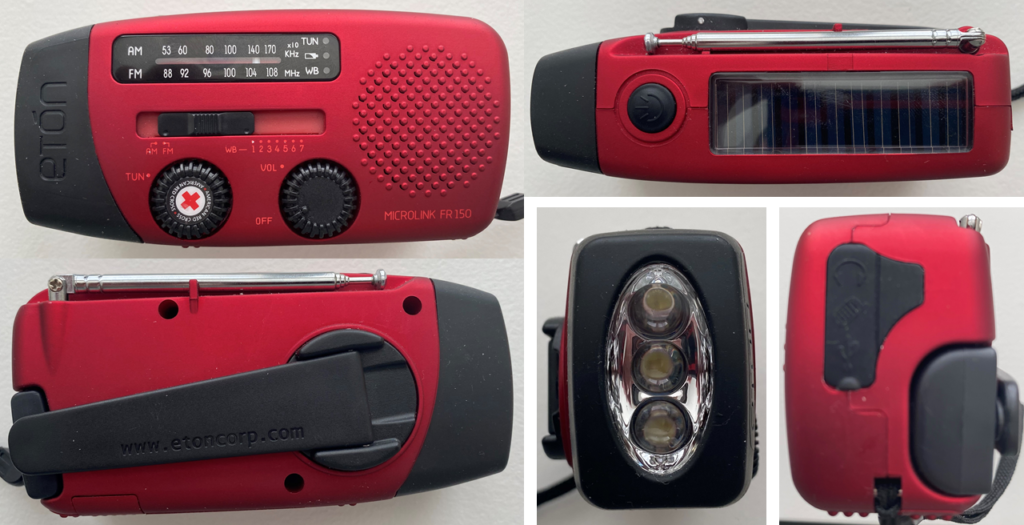
As you can see the variety and functionality of flashlights today has changed quite a bit. This is due to LED lighting and rechargeable battery technology. If you don’t have any yet, I strongly recommend acquiring a couple different types to have when you need them. It should not cost you much to get some peace of mind and have them available when you need them.
Comments?
Let me know what you think below.
Last Updated on August 16, 2022
